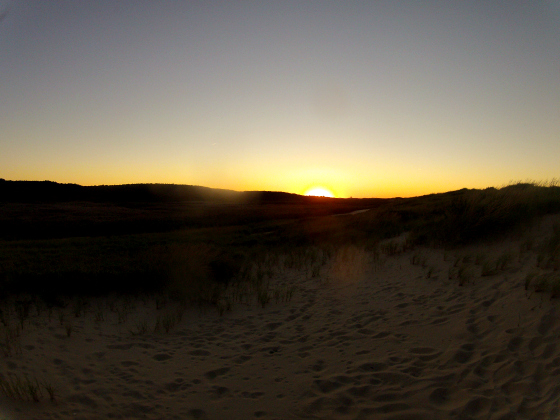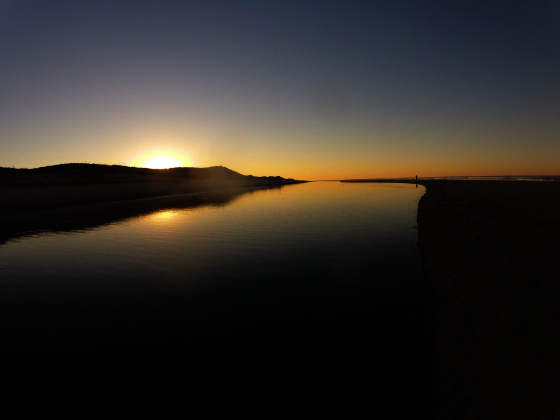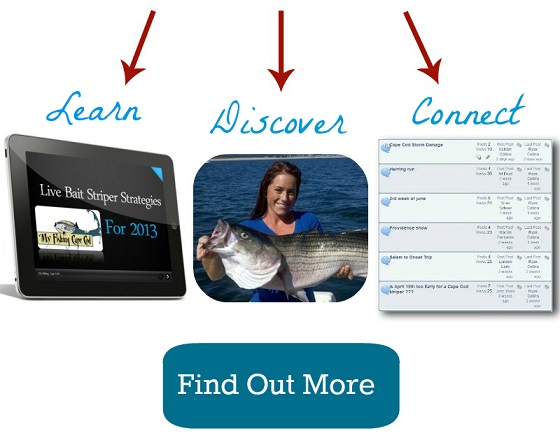As is often the case, the honey hole which has been producing so well for me recently, completely dried up this week. I am confident that big bass will return to that particular spot, yet until that happens it is time to explore and find new surfcasting hot spots. One area where I plan on spending a lot of time this fall is the great backside beach of Lower Cape Cod. This week I set off to one such beach, where I know many bass in excess of 50 pounds have been taken from the surf.
Throughout the decades surfcasters have scoured the bars, tidal rips and holes that litter this beach, in search of monstrous striped bass. I have heard stories about "the good old days" where a fisherman would catch 50 and 60 pound stripers, 20 pound bluefish and enormous pollock all in one night. This wild stretch of beach has a lot of history.
Just offshore of this beach there are thousands of shipwrecks. Cape Cod's unpredictable weather, vicious winter storms and hazardous sandbars made sailing along the backside beaches a nightmare for ancient captains. Shifting sands and currents have buried the majority of these shipwrecks beneath tons of sand.
Occasionally the sand shifts, revealing a shipwreck that may of been covered for centuries. This past winter's storms have shifted a lot of sand, uncovering remnants of sunken ships. I came across the wreck below while walking one of the many bars in the area.
The history of Cape Cod's backside beaches intrigues me and adds to the enjoyment of fishing this spectacular area. The chance to catch a fish of a lifetime is really just the icing on the cake.
The Search for Stripers
I felt slightly overwhelmed as I crested a dune, which towered above the beach below. From this high vantage point I could see miles of beach extending to the north and to the south. Where among all this sand and surf could the bass be?
Since there were no visible signs of fish or birds working the surface, my fishing buddy Andrew and I decided to walk north, where I knew there was a series of bars and holes which may hold bass once the flood tide began.
The sun hung low in the sky as we began walking past dunes and driftwood. It was a "romantic" time of the day to be on the beach, and we joked how we should be probably spending this time with our girlfriends, and not each other.
We walked for a long time before stopping to make a cast. There were signs of life. A few birds were diving around the outer bars, well out of casting range. Seals goofed around in the surf, and in closer to shore bait dimpled and scattered across the surface of tidal pools.
Just as the last of the sun sank below the horizon we found a spot where the surf broke through a bar. This is where we would start fishing, hoping that the flood tide would bring big striped bass over the sand bar and into the tidal pool which lay at our feet.








